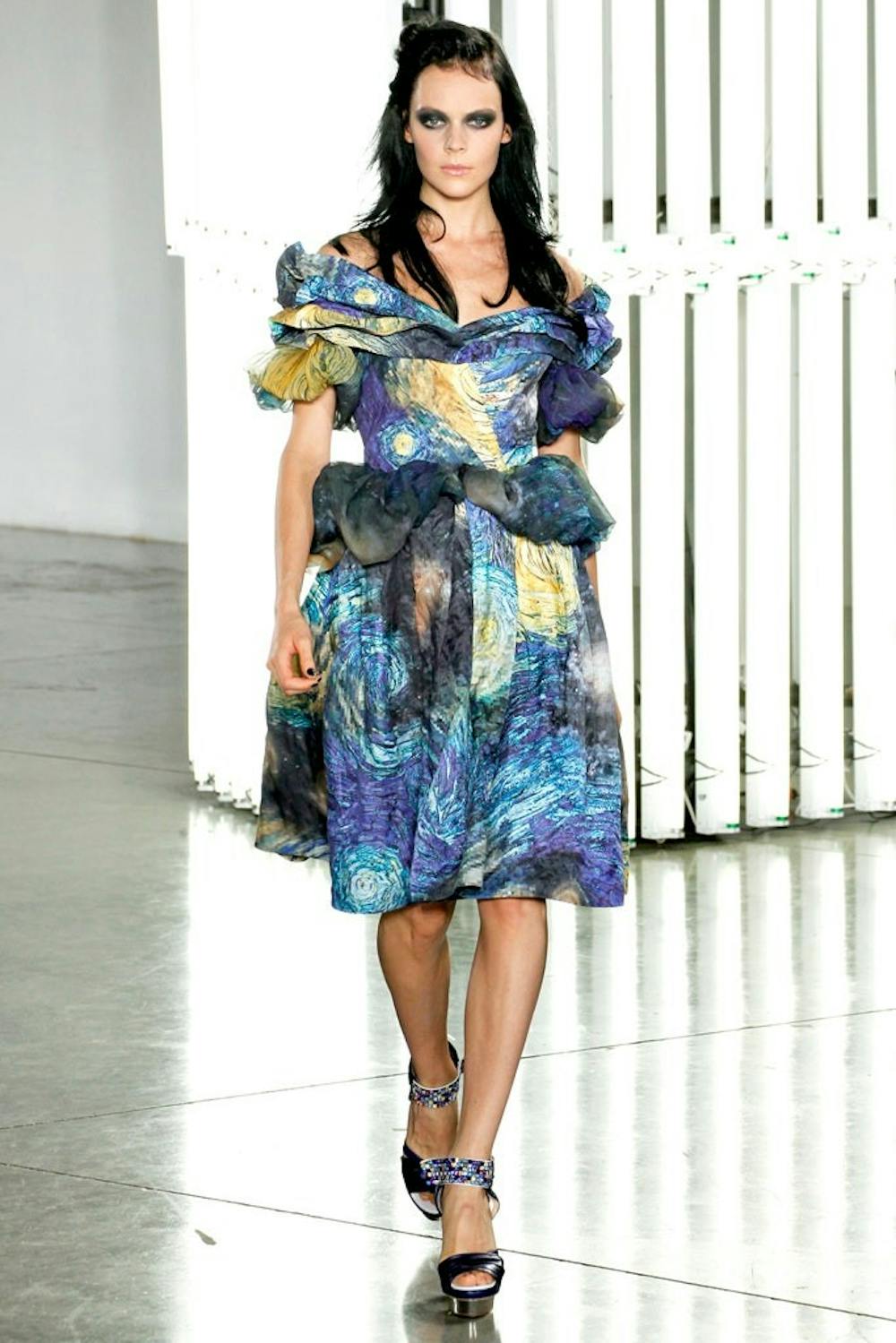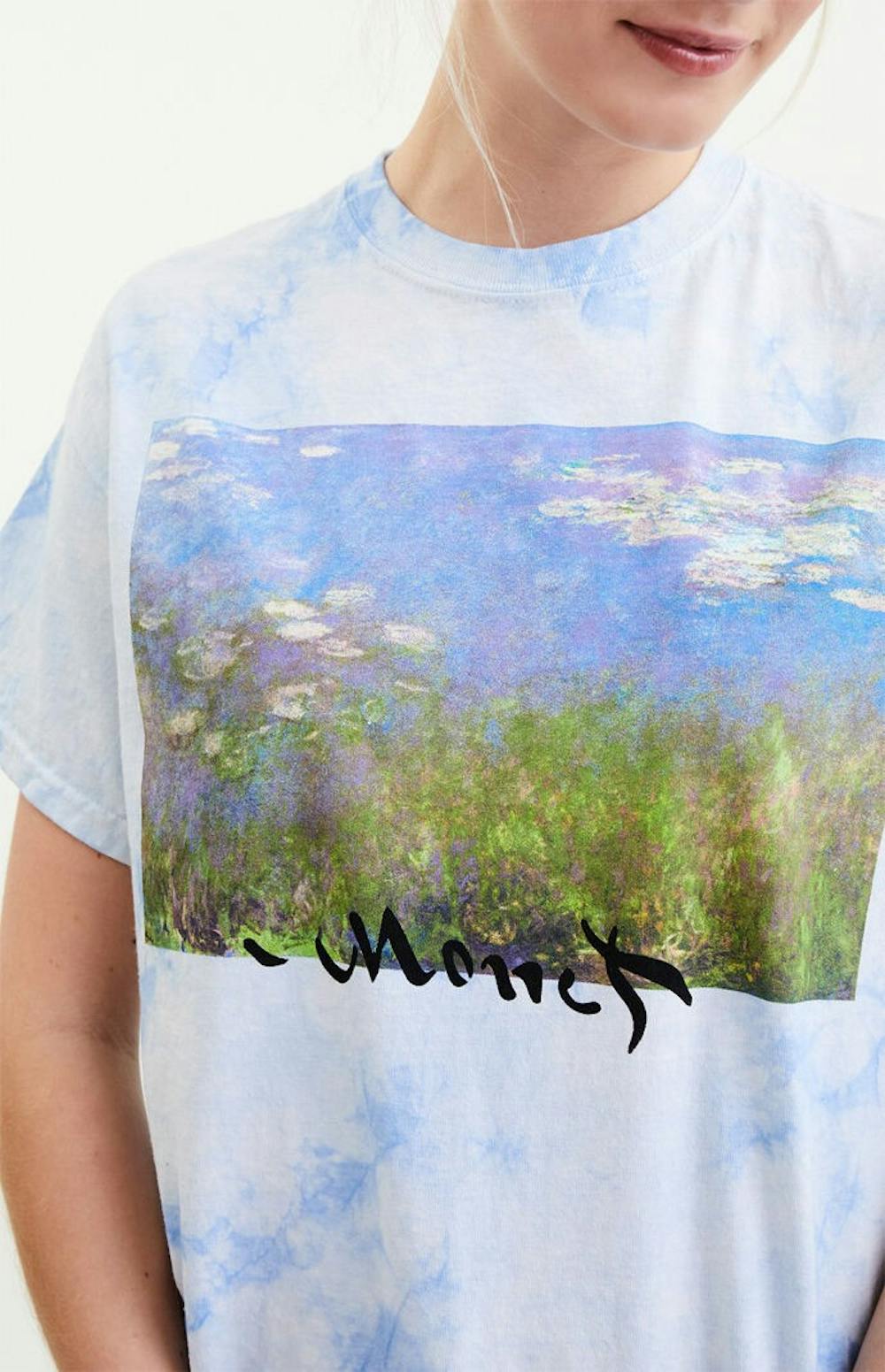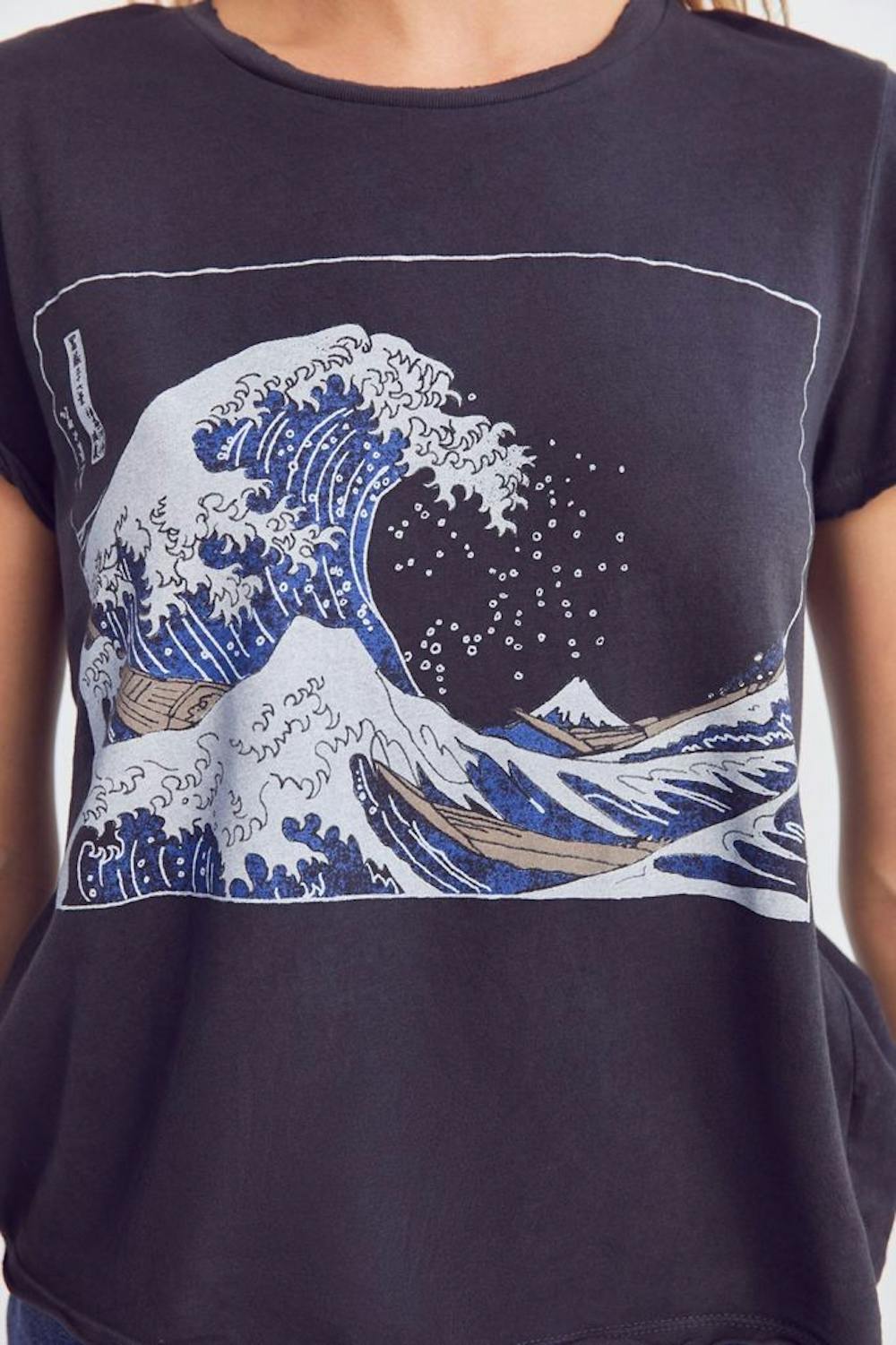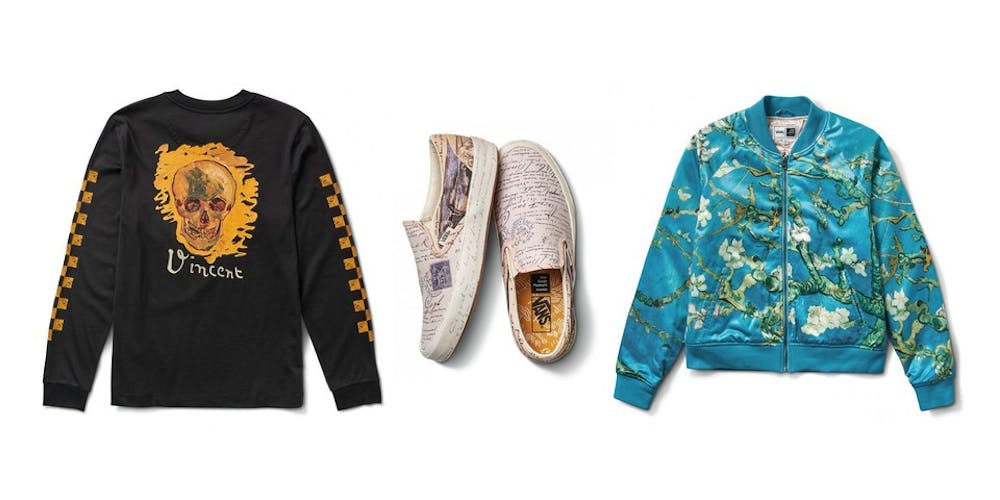In 1965, the designer Yves Saint Laurent created a collection directly inspired by the works of Piet Mondrian. The collection, dubbed the Mondrian Dresses, directly transferred Mondrian’s Composition with Large Red Plane, Yellow, Black, Gray, and Blue (1921) onto six different dresses.

Photo courtesy of Musée Yves Saint Laurent / CR Fashion Book
With this, Saint Laurent cemented and revolutionized the dialogue between fashion and art—one that would impact high fashion for years to come.
Art and fashion are two cultural spheres that have shared significant overlap throughout history. The most literal interpretation of this relationship, however, is the direct translation of iconic art into couture—a practice that has evoked both controversy and acclaim. In the case of Saint Laurent, the dresses were designed with Mondrian’s original aesthetic and artistic values in mind. The dresses maintained key principles of the Neoplastic Art movement that were present in the original artwork, including a primary color palette and rectangular shapes formed on intersecting grid lines. Most significantly, Saint Laurent was able to directly emulate Mondrian’s straight, linear design without allowing it to appear curved when adhering to a woman’s silhouette. The collection appealed to a growing interest in mod and minimalist fashion, quickly becoming a meteoric success.
Over time, the relationship between fashion and art has only strengthened. Designers often take cues from prolific artists or movements—sometimes, as was the case with Saint Laurent, appropriating entire artworks into their collections themselves. For instance, Rodarte’s Spring/Summer 2012 collection was inspired by Van Gogh’s most notable paintings. One particular look in this collection emblazoned Starry Night across a cocktail dress with a princess silhouette.

Photo courtesy of Yannis Vlamos / Vogue
Furthermore, in April 2017, Louis Vuitton collaborated with artist Jeff Koons to release the Masters LV X Koons series: featuring handbags, backpacks, scarves, and shawls adorned with iconic pieces of Western art. Following the release of Masters II, the second installment of the collection, the total repertoire of artists featured on Louis Vuitton merchandise included the likes of Da Vinci, Monet, Van Gogh, Manet, Boucher, and Fragonard.
However, the relationship of high fashion and art has been met with criticism. Saint Laurent's original collection was criticized for the dissonance between Mondrian's original artistic intent, and the commercialization of his artwork through fashion. Mondrian was famous for his belief that "through his art, he could help free itself from a growing dependence on disposable material objects," hence, the commodification of his art into a luxury garment seemed paradoxical to the intent of his art itself. Louis Vuitton's collection was met with similar pushback, with critics arguing that reducing iconic paintings to luxury garments was both a betrayal of artistic intent and a desolate statement on consumerism. One of the most valid critiques seems to be in the inherent hypocrisy in such appropriation: luxury brands openly condemn knockoffs, while, in a sense, ripping off the work of others in their own designs.

Photo courtesy of PacSun
Yet this phenomenon continues to persist even in more commercialized, mainstream avenues of fashion. Urban Outfitters, Shein and Pacsun all sell graphic tees emblazoned with the work of prominent artists, most commonly Van Gogh and Monet. Hokusai's The Great Wave off Kanagawa is also heavily featured as a centerpiece of graphic tees. Such iterations seem to embody the central criticism of the practice of appropriation: it distills paintings that are considered reverential to the point of priceless in the art world to bare commodities.

Photo courtesy of Urban Outfitters
However, some hold an entirely different perspective on this practice of appropriation. The best example of this is the 2018 collaboration between Vans, a skateboarding apparel brand, and the Van Gogh Museum. Vans partnered with the museum to produce "miniature masterpieces you can wear," including sneakers, jackets, backpacks, and hats that were wrapped in well-known paintings. The museum's former director, Axel Ruger, discussed that the collaboration was intended to "make Van Gogh as accessible to people all over the world as we possibly can" and "make his work [feel] relevant today."

Photo courtesy of the Vincent Van Gogh Museum / Hypebeast
Perhaps, then, fashion's relationship with art is not as unilateral as it first appears. Given the rate at which trends shift and change in a world now eclipsed by fast fashion and its 52 micro seasons, the use of such art lends a sense of timelessness that the fashion world desperately needs. Meanwhile, fashion seems to provide art with an avenue through which it can connect with an audience far wider than originally intended, spanning generational and geographical divides.
There is no definitive answer as to whether this practice constitutes inspiration or cultural smuggling. Unarguably, this appropriation has broken down the barriers once surrounding canonical art. Whether this diminishes or increases the value of said art remains to be discovered.

